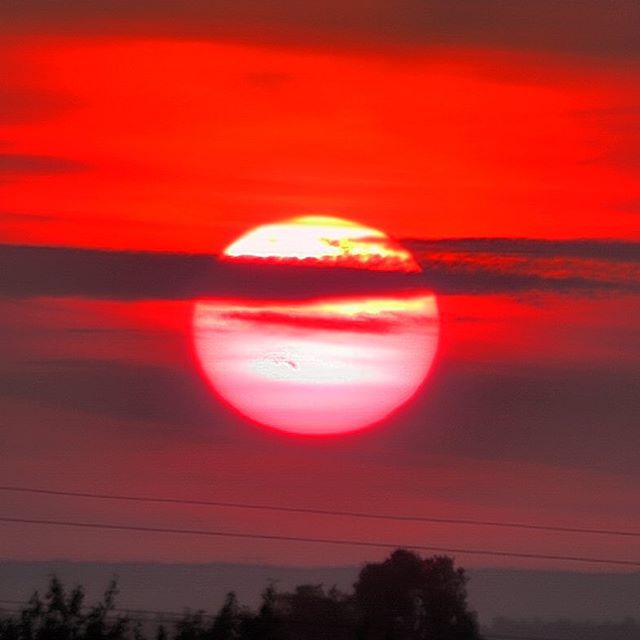What will happen to the eye if you look at the sunset with a telescope?

Immediately answer the question in the headline - nothing bad will happen. I did it, and at the same time I looked with two eyes through binoculars. Here they didn’t believe me, I’m writing this article in proof (I’m writing it myself, and not dictating to my secretary).
Important: Before sunset, when the Sun has not yet touched the horizon, it is not necessary to look, burn a hole shown in the article What will happen to the eye if you look at the sun with a telescope? Under the horizon means the "real" horizon, and not the roof of the neighboring house.
When the sun is at the horizon, its rays travel a significantly larger path through the atmosphere.

To find out how much this way is more and how many times the brightness will weaken, we will borrow the calculations from the article Atmospheric Absorption or how to estimate the air pollution .
Atmospheric mass (eng: airmass ) is a dimensionless quantity that expresses the path length of a beam of light in an atmosphere at the heights of a “homogeneous atmosphere”. As Kirill Grishin AKA Lord_Katler_Bekket showed us , it can be calculated using the following formula:

k = R / H is the ratio of the Earth’s radius and the height of the homogeneous atmosphere (k = 800). The angle h is the height of a star, the distances R , H , and Lshown in this diagram:

Since at sunset h = 0 , the formula degenerates into.

Thus, we get L = 40 , that is, at the horizon the sun beam overcomes forty times more air than at the zenith. Is it a lot or a little? Let's count on. Bouguer law - Lambert - Beer in magnitudes is quite simple:

Here:
m - the observed magnitude
m 0 - stars shine out of the atmosphere
Dm - atmospheric absorption is at its zenith in the magnitudes
of L - air mass
Assume Dm of 0.35, which is even less experimental Cyril estimates. If you takem 0 of the Sun at −26.7, then m of the Sun at sunset will be -12.7, which almost coincides with the magnitude of the full moon and corresponds to a brightness drop of 400,000 times ! If you have already observed a full moon without a “lunar” filter in a telescope, then you know that this is not very pleasing to the eye, but tolerable. If you are embarrassed that the surface brightness is not taken into account in the calculations, I would say that it can be “taken out of the brackets”, since the angular diameter of the solar and lunar disks is about the same.
So in a dusty urban setting, you can still watch the sunset with your naked eye and not suffer. Just do not try to do it in the mountains, where the air is clean and Δm will be about 0.2, and Ldecrease slightly.
You can check the calculations in Stellarium :

It is only necessary to set the corresponding Δm value in the settings (translated as “extinction coefficient” in Russian localization).

The reader may wonder why at sunset it is still much brighter than at full moon night. The thing is that at sunset the surrounding landscape is illuminated not only by the direct weakened light of the Sun, but also by the light scattered in the upper atmosphere.
PS: I made the photo at the beginning of the article without any filters and did not spoil the camera. The image shows a group of spots AR2396 , resembling the imprint of a foot.
